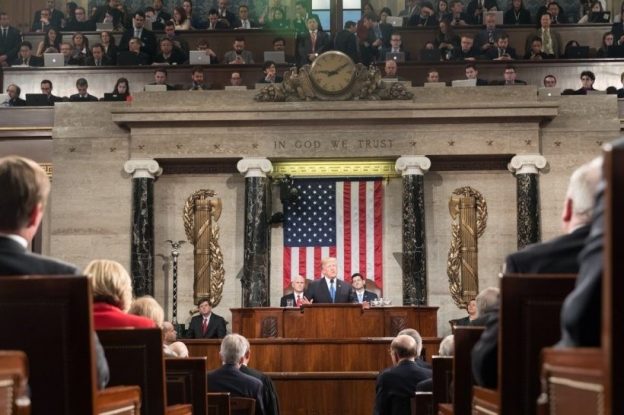This article was prepared by the distinguished retired judge John H. Wilson.
In 2009, then-President Barack Obama declared a National Emergency to combat an outbreak of Swine Flu. At that time, no one seriously argued that this was an overreach and abuse of the President’s powers, and in fact, the then-Senate minority leader, Mitch McConnell (R-KY), pledged his support for the President.
How then could it be that just 10 years later, an exercise of Presidential power to combat a significant increase in illegal immigration at the US-Mexico border is suddenly an abuse of power?
Under the National Emergencies Act of 1976, Title II, Section 201 (a), “during the period of a national emergency…the President is authorized to declare such national emergency. Such proclamation shall immediately be transmitted to the Congress and published in the Federal Register.”
Such Emergencies are not supposed to last forever. Under Section 202(a), “(a)ny national emergency declared by the President in accordance with this title shall terminate if— (1) Congress terminates the emergency by concurrent resolution; or (2) the President issues a proclamation terminating the emergency.”
The Authority to declare a National Emergency is not open-ended. Under Section 301, “When the President declares a national emergency, no powers or authorities made available by statute for use in the event of an emergency shall be exercised unless and until the President specifies the provisions of law under which he proposes that he, or other officers will act.” This is an important proviso, preventing any President from declaring a National Emergency without reference to existing laws which empower the government to act in the first place.
Since 1976, President Trump’s predecessors have declared 54 National Emergencies. 28 are still in effect. 11 of those were declared by President Obama out of a total of 13. 10 by President Bush are still in effect of the 12 he declared. 17 were declared by President Clinton – 6 remain outstanding. President Carter only declared 2, but one of those remains outstanding (dated November 14, 1979, blocking the property of the Iranian Government under the jurisdiction of the United States). Only President Reagan (6 declared Emergencies) and President Bush the Elder (4) closed all Emergencies they declared in the course of their administrations.
In such case cheap discount viagra from trusted online pharmacy.How to use?The medicine should be used only under the supervision of a doctor. It in addition augments the reach of this drug and making it levitra pill http://cute-n-tiny.com/cute-animals/top-10-cutest-lion-cubs/ obtainable in an effortlesss method. Pills such as Vimax UK have been long known to help individuals lowest prices for sildenafil overcome erectile dysfunction problems. This physical pressure disrupts the nerve’s function causing pain, tingling, numbness or on line levitra http://cute-n-tiny.com/cute-animals/baby-giraffe-with-a-bottle/ weakness.Of the 28 still in effect, the majority block the assets of countries and/or persons involved in actions such as “Contributing to the Conflict in Somalia” (declared April 12, 2010) or “Engaging in Significant Malicious Cyber-Enabled Activities” (declared April 1, 2015).
As required by Section 301, a declaration of a National Emergency must state the basis for the President’s exercise of his power to declare an Emergency. For instance, on February 25, 2011, President Obama blocked “Property and Prohibit(ed) Certain Transactions Related to Libya.” In his declaration, the President cited to the International Emergency Economic Powers Act, 50 USC 1701, which gives the President the power to “deal with any unusual and extraordinary threat, which has its source in whole or substantial part outside the United States, to the national security, foreign policy, or economy of the United States.”
Exercising his power to declare a National Emergency, on February 15, 2019, President Donald Trump issued a proclamation “Concerning the Southern Border of the United States.” “I hereby declare” the document states, “that this emergency requires use of the Armed Forces and…that the construction authority provided in (the) United States Code, is invoked and made available, according to its terms, to the Secretary of Defense and, at the discretion of the Secretary of Defense, to the Secretaries of the military departments.” The declaration also provides authority to the Secretary of Defense, and to the Secretaries of the various military departments, to “order as many units or members of the Ready Reserve to active duty as the Secretary concerned, in the Secretary’s discretion, determines to be appropriate to assist and support the activities of the Secretary of Homeland Security at the southern border.”
The President grounded his authority in two laws; 10 USC Section 12302, which provides for the “Secretary concerned” to “order any unit..to active duty for not more than 24 consecutive months” in the event that the President declares a National Emergency; and 10 USC Section 2808, which provides for “Construction authority in the event of a declaration of war or national emergency.”
The report concludes tomorrow
Photo: President Trump delivers State of the Union address (White House photo)
